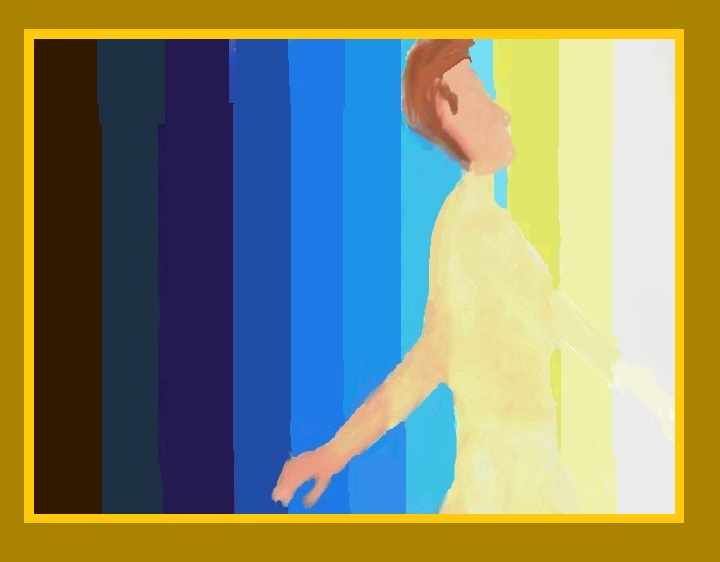I am a simple farmer in a remote part of Bhutan. I live in Bumthang Valley, right in the heart of the country. The valley is famous for its scenic views and vast green forests. One could sit for hours by the river and admire the beauty of the mountains, the rivers, the birds and the endless spark of life.
I go fishing regularly for my survival. I choose spots away from the other anglers to find a better catch and enjoy my time with nature. I like one particular corner of the river, five kilometres from my village, south of the temple
The path leads into the forest and then opens up to a riverbed. I walk along the riverbed for three kilometres to reach my spot. I have various ways of identifying my spot, as the intricate rock-patterns on the bank provide several comfortable spots to sit. There is a giant ficus tree—my friend and protector from sun and rain.
I sit beneath the tree and prepare for fishing. But I am seldom alone. I have a companion—actually, a stranger that could be called a companion or a spectator, an observer or merely just another form of life existing in my reality. It’s a bird. Every time I come here, it is sitting on the rocks on the opposite side.
We have met each other a countless number of times. We acknowledge each other’s presence, but give each other space and go about our business. I never try to feed it or interact with it. It has never tried to approach me for anything. It is merely a coincidence that whenever I come here, it is here as well.
It is a heron. I have seen it carefully waiting hours and hours for a fish without moving or changing its position. I call it ‘the meditating heron.’ One day, I will tell my kids about it.
I like the way it goes about fishing. Sometimes it walks in slow motion, searching for fish with the intent of surprising the fish. However, it is by no means a slow bird. If it decides to go for the prey, it makes a very fast movement with its beak and latches onto a fish.
I wonder how the fish sees it. Imagine a pair of giant chopsticks coming towards you at full speed! Some fish must get startled by the speed of the heron’s approach. It isn’t always successful, and
I try to take inspiration from the heron’s fishing routine. Sometimes a few minutes are enough, but sometimes I too wait for hours. It is becoming harder to find a good catch these days. Fishing upstream has increased, and the flow of the river is getting stronger. The glaciers are melting very fast and this is changing the habitat of the area around the riverbank.
I see that the heron struggles at times to find the catch, and I wonder if it has other spots for fishing.
8 years later…

After continuing the same routine for some years, I moved on to other things. I started a business, I got married and now I have kids, Tashi and Nuba. I mention my fishing days to the kids. They are very eager to go to the fishing spot, so I take them out with me.
[su_pullquote align=”right”]My friends, the rocks and the ficus, are still there—unchanged and welcoming—but something doesn’t seem right.[/su_pullquote]
My friends, the rocks and the
One day, I walk into a bookstore with my kids in the city of Thimpu. There is a section of books on wildlife. I want to find out more about my lost companion—the meditating heron. For all these years, it has never occurred to me to read more about it.
I know what it looks like in summer and winter. I remember its magnificent flying style and its cool composure during the meditation hours. I had seen him basking in the sun
At the bookstore, I open a book called Birds of Bhutan, but I don’t find the heron. The book talks about the purple heron, the gray heron, egrets, the pond heron
I carefully go through the index and find a note about rare species. I turn to page 339, and there it is! Finally! The milk-white belly and throat with grey upper parts. I read on … the habitat description and
They call it the ‘white-bellied heron’ or ‘imperial heron,’ scientifically named Ardea Insignis. I call my children, Tashi and Nuba, to show them the bird I always talk
*Last record of species in
«RELATED READ» THE HIDDEN WORLDS: A novel on environmental stewardship for teens [book review]»
illustration by Hemal Naik

